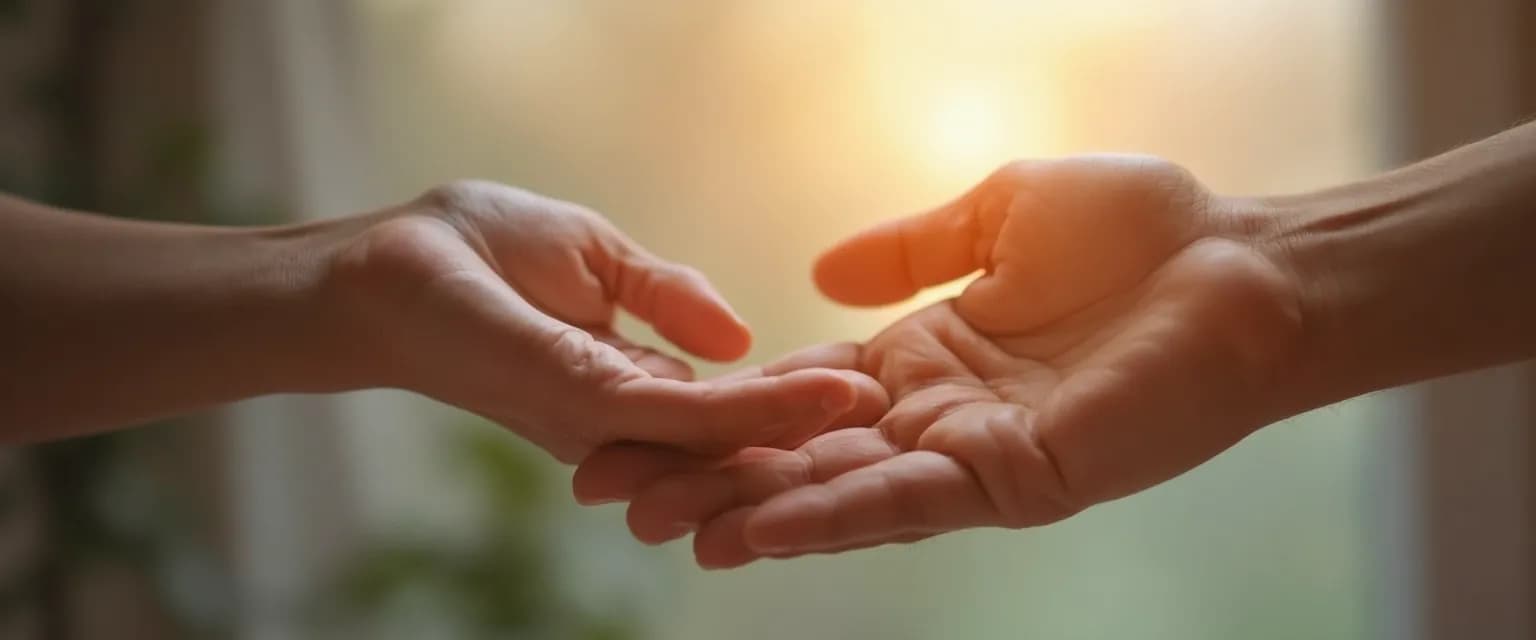Why Heartbreak Is So Painful and How Physical Touch Heals the Hurt
Have you ever wondered why heartbreak is so painful that it feels like a physical wound? The crushing chest pain, the knot in your stomach, the overwhelming sense that your body is physically breaking apart—these sensations aren't just in your head. Science confirms what your heart already knows: heartbreak hurts in very real, physical ways.
When relationships end, our bodies respond with genuine physical symptoms that can be debilitating. The good news? Physical touch—from friends, family, even pets—offers surprising relief when heartbreak is so painful that you can barely function. This healing power works through specific neurological pathways that directly counter the physical symptoms of heartbreak.
The touch of a trusted friend's hug or the warmth of a pet curled in your lap activates your body's natural healing mechanisms, creating a biological response to emotional pain that helps restore balance during this difficult time.
Why Heartbreak Is So Painful: The Science Behind Your Physical Symptoms
Heartbreak is so painful because it activates the same neural pathways as physical pain. Functional MRI studies show that social rejection lights up identical brain regions as when you experience bodily injury. This explains why a broken heart can feel like a punch to the chest—your brain processes both experiences similarly.
When you're heartbroken, your body enters a stress response state. Cortisol floods your system, your blood pressure rises, and inflammation increases. These physiological changes manifest as very real symptoms:
- Chest tightness and physical aching
- Disrupted sleep patterns
- Digestive issues and appetite changes
- Weakened immune function
Researchers at the University of Michigan found that the brain doesn't fully distinguish between physical and emotional pain. This overlap explains why heartbreak is so painful that over-the-counter pain relievers sometimes provide relief—they target the shared neural pathways of both physical and emotional distress.
Your body's stress response during heartbreak also triggers the anterior cingulate cortex—the brain region that registers physical discomfort. This creates a feedback loop where emotional pain intensifies physical symptoms, making recovery particularly challenging without support systems and coping strategies.
Healing When Heartbreak Is So Painful: The Power of Physical Touch
When heartbreak is so painful that it overwhelms your system, physical touch provides a direct neurological antidote. Positive, non-romantic touch triggers oxytocin release—often called the "love hormone"—which directly counters stress hormones like cortisol that surge during heartbreak.
This biochemical response explains why a 20-second hug from a friend can momentarily ease the crushing weight of heartbreak. The science is clear: physical touch lowers blood pressure, reduces cortisol levels, and activates your parasympathetic nervous system—your body's natural calming mechanism.
Effective forms of healing touch include:
- Embraces from trusted friends and family members
- Professional massage therapy
- Cuddling with pets (animal therapy)
- Self-soothing touches like gentle hand-on-heart placements
Studies from the Touch Research Institute demonstrate that regular physical touch decreases the brain's pain perception. When heartbreak is so painful that it dominates your every thought, these touch-based interventions provide neurological relief by activating your body's natural pain management systems and rewiring emotional responses.
Moving Forward When Heartbreak Is So Painful: Your Touch-Based Recovery Plan
Ready to incorporate healing touch into your heartbreak recovery? Start with these simple practices:
- Schedule regular hugs with supportive friends (aim for at least three 20-second hugs daily)
- Consider a weekly professional massage to reduce physical tension
- Spend time with pets—yours or borrow a friend's if needed
- Practice self-touch techniques like gentle hand-on-heart breathing for 2 minutes when pain intensifies
Don't hesitate to directly ask for support: "I'm going through a tough breakup and could really use a hug" gives others clear permission to provide the physical comfort you need when heartbreak is so painful.
Remember that healing takes time, but incorporating these touch-based strategies creates a foundation for recovery by addressing both the emotional and physical aspects of heartbreak. Your body knows how to heal—these techniques simply provide the conditions that make that healing possible.




